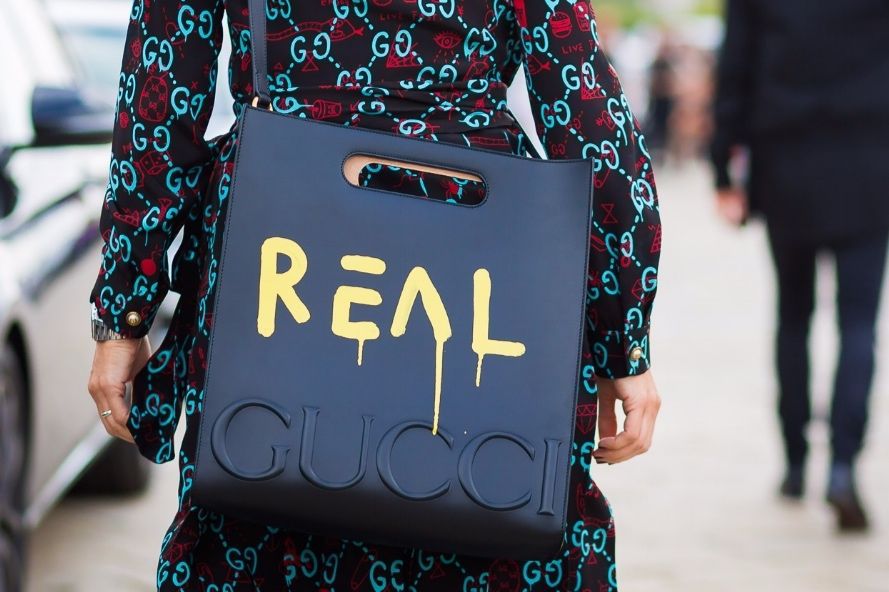Introduction
In recent months, due to the huge surge in the price of cryptocurrencies, blockchain technology has attracted the attention of the media and some highly influential individuals, including Tesla’s Elon Musk. This article aims at analysing the possible applications of blockchain technology in the context of the fashion industry. Firstly, it is crucial to define blockchain and its functioning. Blockchain is a shared, immutable, and digital ledger where information is stored, duplicated and distributed safely across the entire network of computer systems composing the blockchain. In other words, it is an information-recording system that complicates or totally prevents information mutation. Being distributed, participants can monitor all the information present on the blockchain at any time. The key attributes of blockchain technology are distribution and immutability. The abovementioned attributes are pivotal to solve issues inherent to the fashion industry, such as counterfeiting, supply chain transparency and P2P exchange.
Counterfeiting
The fashion and luxury industry has long been subject to illegal practices like counterfeiting. As of 2019, the counterfeit fashion industry captured roughly $1.2 trillion a year, resulting in annual losses of $30.8 billion for high-fashion brands (Kelly, 2019). In September 2020, Shanghai police unveiled yet another counterfeit bust, seizing $14.6 millions worth of equipment and raw materials aimed at producing sophisticated fake Louis Vuitton bags (Hall, 2020). However, although brands like Louis Vuitton own the necessary resources and capabilities to investigate and enforce legal actions, most fashion businesses, severely hit by the impact of the pandemic, are often incapable of fighting against these illegal practices. As maintained by Luo, general manager of Roy IP Legal Consultant Limited, “the counterfeiters know when the brands aren’t striking them as hard as before and that encourages them to counterfeit more”. Therefore, as incurring in legal actions proves time- and resource-consuming, it is mandatory for brands to find alternative methods to discourage counterfeiting ex ante. Fashion firms are already testing non-distributed solutions to avoid counterfeiting, such as serial numbers or barcodes printed to clothes or luxury accessories. The main issue related with the abovementioned solution is that data stored in a central database could be subject to manipulation or destruction by hackers, especially in the long run. Blockchain could solve this issue: through an immutable record of information, a distributed ledger technology would guarantee the authenticity and security of fashion and luxury items.

Supply chain transparency
The past years have been permeated by corporate actions towards CSR practices, as multiple brands are now opting for recycled materials and less environmentally-damaging production facilities. As a reference, in 2017, Gucci unveiled “Culture of Purpose”, a 10-year sustainability plan focusing on creating a positive environmental and social impact. This priority shift towards corporate social responsibility was mainly adopted as a strategic response to public unrest due to past sustainability scandals. Among others, the tragic collapse of the Rana Plaza building, an outlawed Bangladesh textile plant working for multiple fashion companies, in 2013, or Burberry being found burning unsold stock worth millions, in 2018. Moves towards sustainability proved fundamental to restore brand image and gain relevant competitive advantages. Blockchain technology could represent an efficient and innovative method to ensure supply chain traceability and transparency, both equally necessary for today’s fashion and luxury companies. One pioneer example is Martine Jarlgaard, who collaborated with Provenance, and presented the first blockchain-tracked garment at Copenhagen Fashion Summit, in May 2017. By connecting a unique digital token on each garment, all parties involved in the fashion pipeline, up until the customer, can register and track each step of the supply chain on the blockchain. This allows an unmodifiable, transparent and readily available traceability of the production process, enabling brands to provide verified information about the materials, processes and people behind their products.
P2P exchange
The second-hand fashion and luxury industry, both as a convenient and a sustainable alternative to traditional retail, has been growing rapidly over the past years. By 2020, second-hand customers increased by 64 percent compared to 2016 (Sabahu, 2020), and this circular economy is only expected to grow as priority shifts towards sustainability. This trend was further reinforced by Kering’s acquisition of a 5 percent stake in Vestiaire Collective, an online marketplace for second-hand items, last March. These platforms have so far proven crucial to ensure the authenticity of products and safe delivery, however, they retain high selling margins on each transaction. This issue is a relevant obstacle to the development of a fully sustained circular economy, and it could be solved through blockchain. Indeed, it would provide a platform which safely and unalterably performs a transfer of ownership from seller to acquirer. Moreover, distributed ledger technologies would allow quicker and more efficient identity verification processes, bypassing third-party support, and ensuring traceability.

Conclusion
In conclusion, blockchain could represent an efficient method to face threatening issues in the fashion industry. Firstly, it could terminate the broad counterfeiting phenomenon, through the provision of an immutable and distributed record of information directly connectable to fashion and luxury items. Secondly, blockchain would ensure traceability and transparency of the fashion pipeline, where materials, processes and people are fully detectable by the client. Lastly, it could facilitate P2P exchanges, bypassing third parties retaining possibly high commission fees, and ensuring safe transfers of ownership. Blockchain is gaining rapid grounds in the fashion and luxury industry. To confirm this, just days ago, an article published by the Business of Fashion revealed that Cartier and Prada are working on a blockchain alliance with LVMH to create a shared platform aimed at fighting counterfeiting and improving visibility of the supply chain. Therefore, brands must keep up with this recent digital trend, or they could otherwise lose relevant sustainable competitive advantages vis à vis competitors.
article written by Carlotta Puccini and Emanuele Evangelisti in collaboration with BSBCA (Bocconi Students Blockchain and Cryptocurrency Association)





